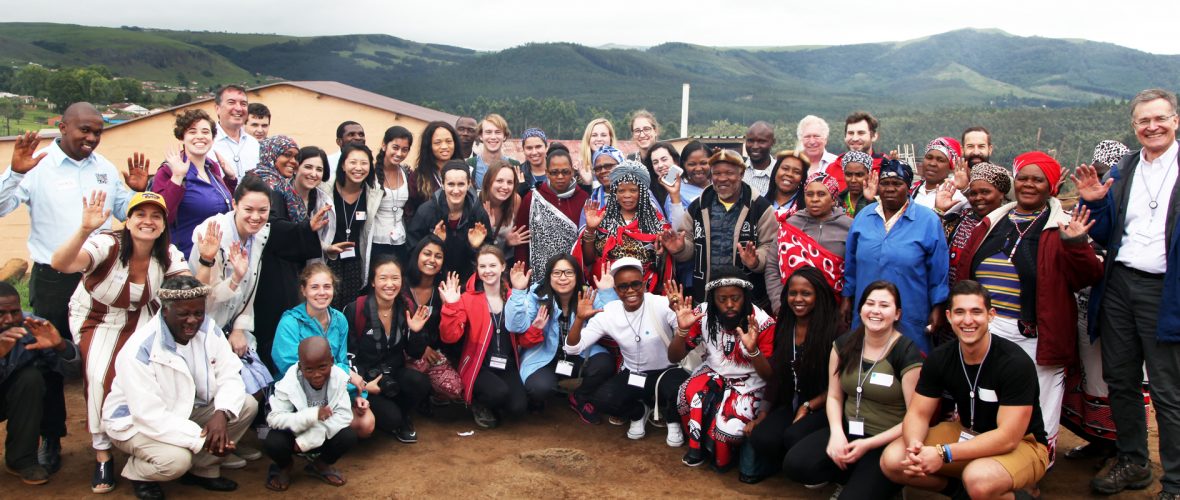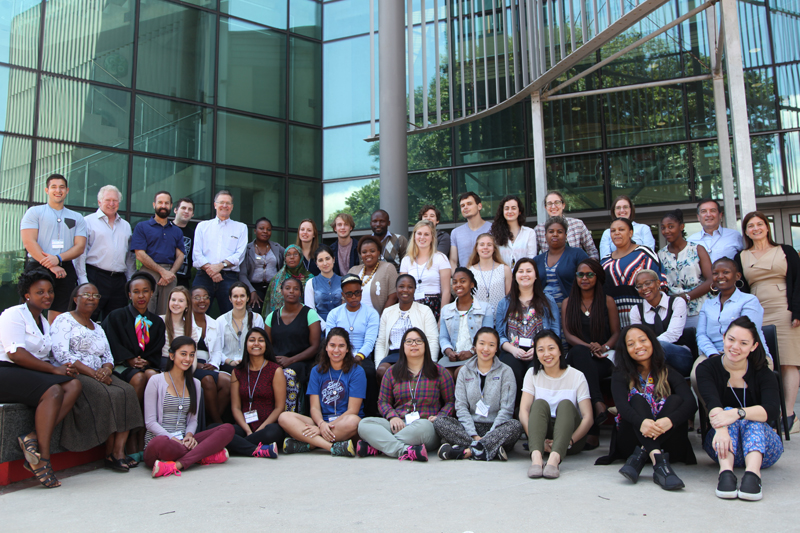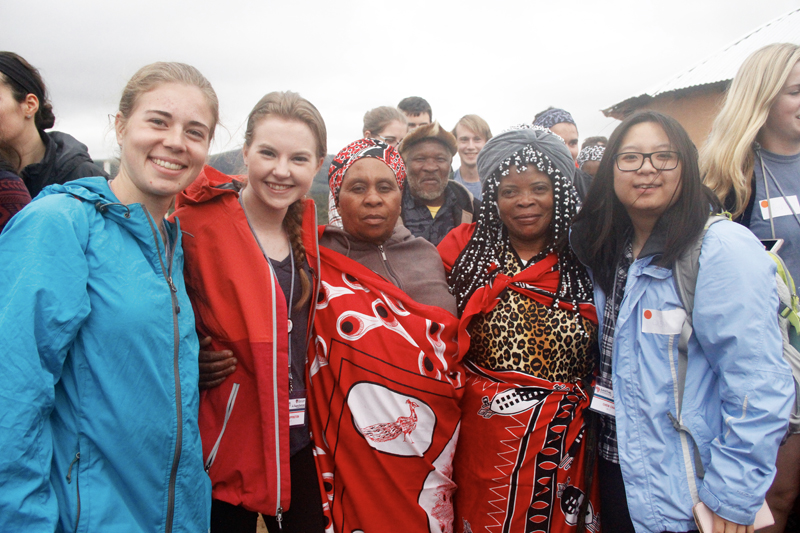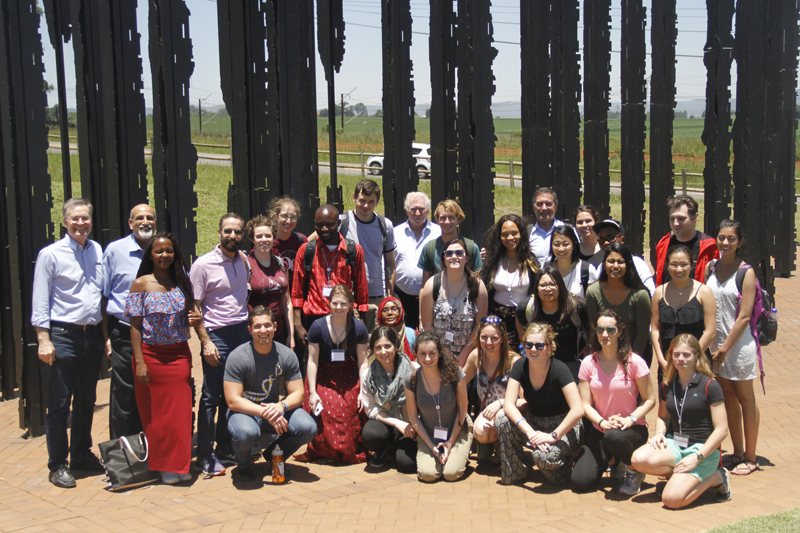Date: March 28, 2017 By:

Nineteen MIT undergraduates attended the inaugural Health Sciences and Technology (HST) course “Evolution of an Epidemic”, taught during the 2017 Independent Activities Period (IAP) in KwaZulu Natal, South Africa.
Focusing on the HIV epidemic as an example, course directors Dr. Bruce Walker (Ragon Institute of Mass General, MIT, and Harvard) and Dr. Howard Heller (MIT Medical) built a curriculum around how the medical, scientific and public health communities identify the emergence of a new epidemic, discover the cause through clues provided by disease manifestations in patients, develop drugs and vaccines, and how policy decisions and advocacy influence the course of the epidemic.

HST.S46 contingency pictured with local students at the Africa Health Research Institute.
The week-long course involved morning lectures on HIV epidemiology, pathogenesis, treatment and prevention, followed by afternoon field trips to visit traditional healers, speak with infected and at-risk individuals, tour urban and rural health care facilities, and visit diverse research sites.
The students also traveled to the Wellcome Trust-funded Africa Center in a rural area three hours north of Durban, where they participated in a “datapalooza”. The event was similar to an “Iron Chef” competition, where contestants are provided specific ingredients and challenged to cook a meal. Instead of ingredients, the students were given the categories of data collected over the past 15 years on over 100,000 individuals visited thrice yearly in that rural population, and asked to use the knowledge they had gathered through the course to come up with a novel research question using these data categories to provide insights regarding ongoing challenges of the HIV epidemic. Their creative proposals included developing a quantitative measure for stigma, using heat conductivity theory to map HIV spread, and defining the role of water source on infant mortality.
“We are very thankful to IMES, MISTI, and private funders for their support of this course,” said Bruce Walker. “Teaching about the evolution of the AIDS epidemic in a region of the world where it is still evolving provided unique insights to the students. Speaking with at-risk young women, in whom the yearly incidence is nearly 10%, provided a window onto the complexities of the epidemic and the economic and societal challenges to prevention.”
“The broad course survey allowed the students to see and learn about the many aspects of the epidemic that contributed to the way it has evolved and how it can serve as a model for other global health issues,” said Howard Heller.

HST.S46 students (L to R) Sophie Blackburn, Anna Sappington, and Chew Chai pictured with South African traditional healers.

HST.S46 class pictured at the Nelson Mandela Capture site; a national monument.
Story and photo captions courtesy of MIT Institute for Medical Engineering & Science (IMES).